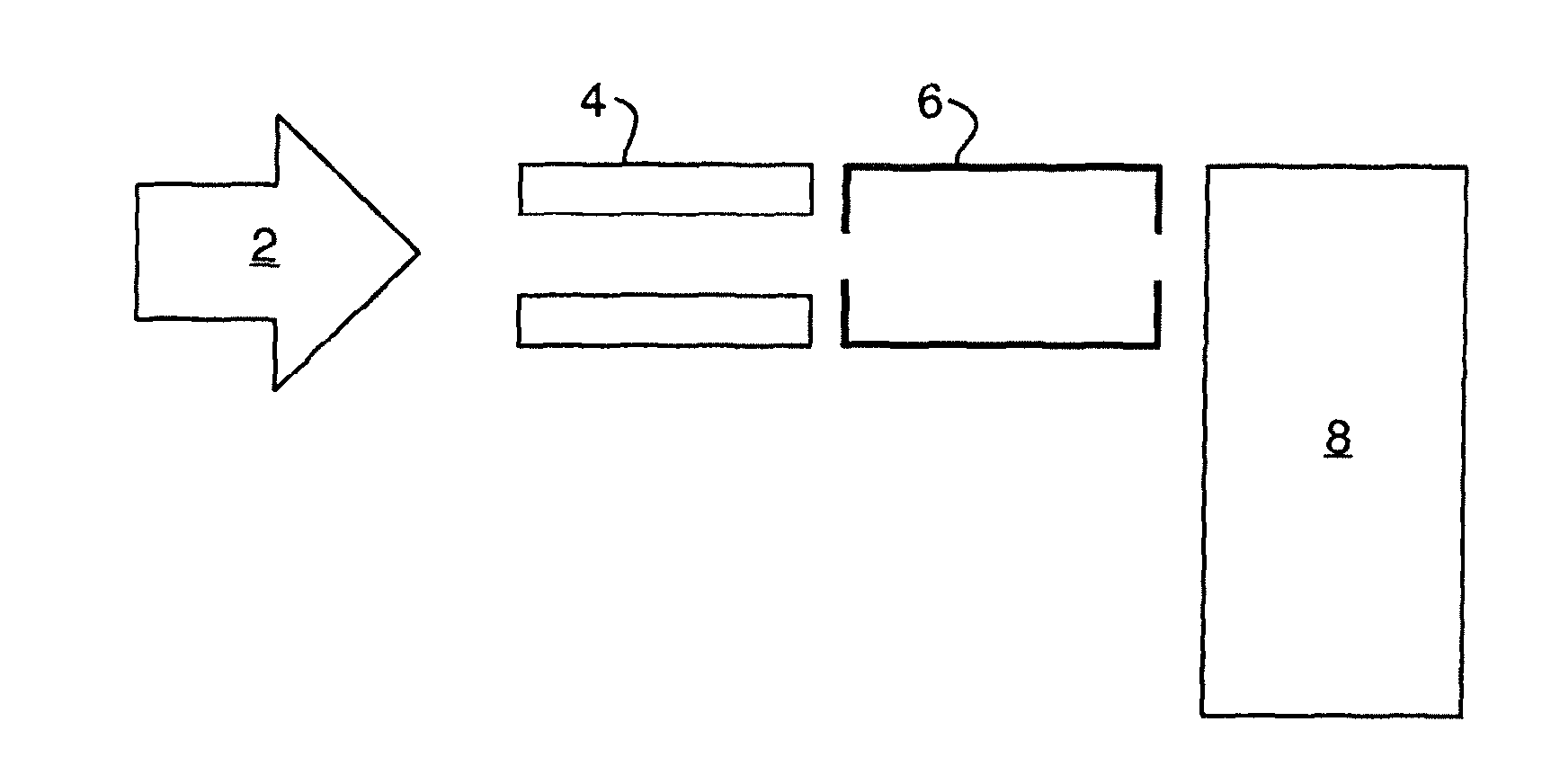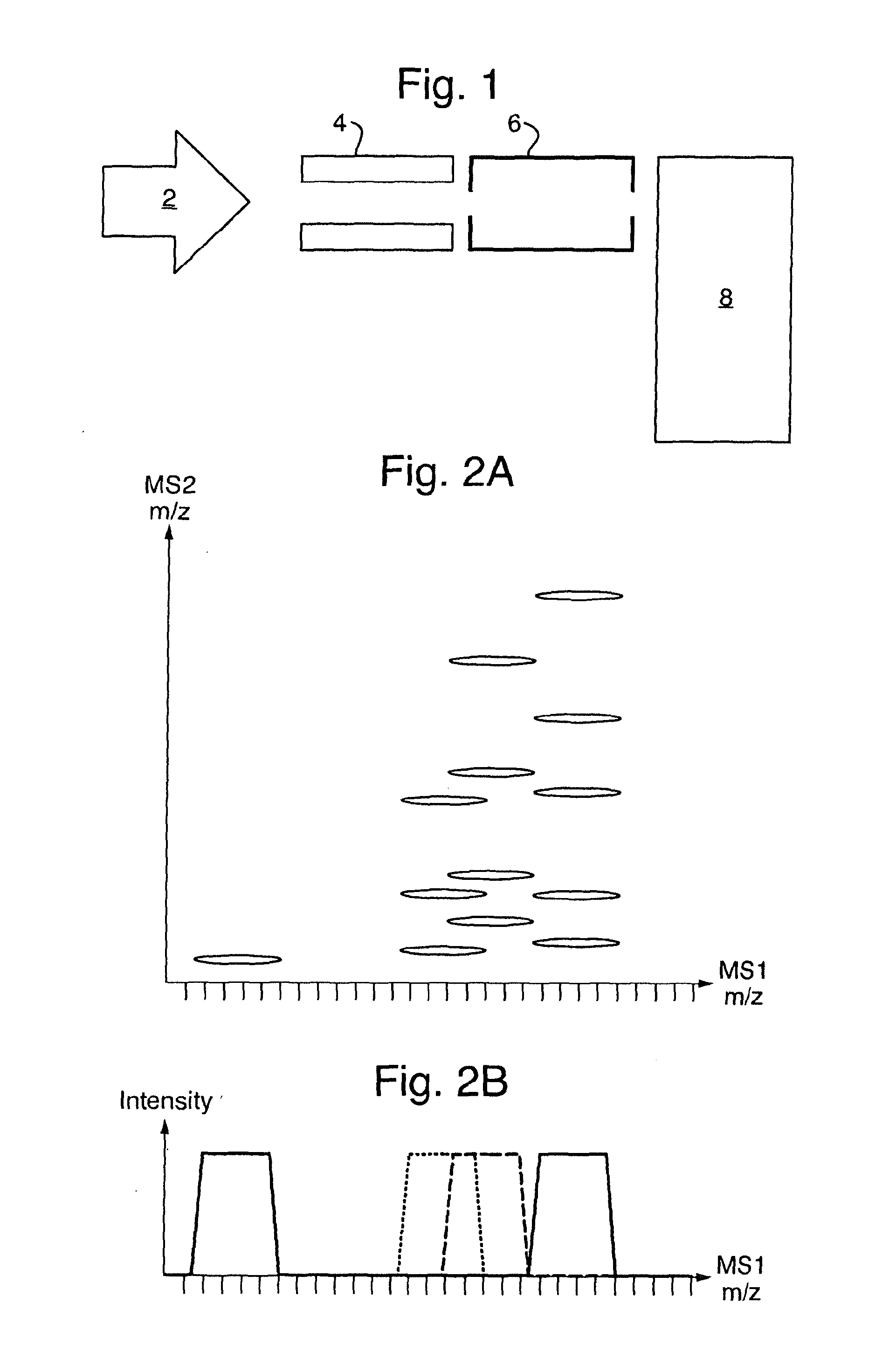Method of Identifying Precursor Ions
a precursor ion and ion technology, applied in the field of identifying precursor ions, can solve the problems of limited specificity of techniques, low duty cycle, and low specificity of techniques, and achieve the effects of improving duty cycle, high precursor ion specificity, and low resolution
- Summary
- Abstract
- Description
- Claims
- Application Information
AI Technical Summary
Benefits of technology
Problems solved by technology
Method used
Image
Examples
Embodiment Construction
[0096]FIG. 1 shows a schematic of a preferred embodiment of a mass spectrometer according to the present invention. The mass spectrometer comprises a quadrupole mass filter 4, a gas cell 6 and an orthogonal acceleration Time-of-Flight mass analyser 8. During operation, the quadrupole mass filter 4 is set so as to have a relatively low resolution. For example, the quadrupole 4 may transmit precursor ions 2 within a transmission window having a width of 25 Da. Precursor ions 2 that are transmitted by the quadrupole mass filter 4 are accelerated into the gas cell 6 such that they fragment to produce fragment ions. These fragment ions are then mass analysed in the Time-of-Flight mass analyser 8. The quadrupole mass filter 4 is scanned with time such that the range of mass to charge ratios of the transmission window changes with time. The timing at which fragment ions are detected may be correlated to the timing of the transmission window in which their precursor ions 2 were transmitted ...
PUM
 Login to View More
Login to View More Abstract
Description
Claims
Application Information
 Login to View More
Login to View More - R&D
- Intellectual Property
- Life Sciences
- Materials
- Tech Scout
- Unparalleled Data Quality
- Higher Quality Content
- 60% Fewer Hallucinations
Browse by: Latest US Patents, China's latest patents, Technical Efficacy Thesaurus, Application Domain, Technology Topic, Popular Technical Reports.
© 2025 PatSnap. All rights reserved.Legal|Privacy policy|Modern Slavery Act Transparency Statement|Sitemap|About US| Contact US: help@patsnap.com



